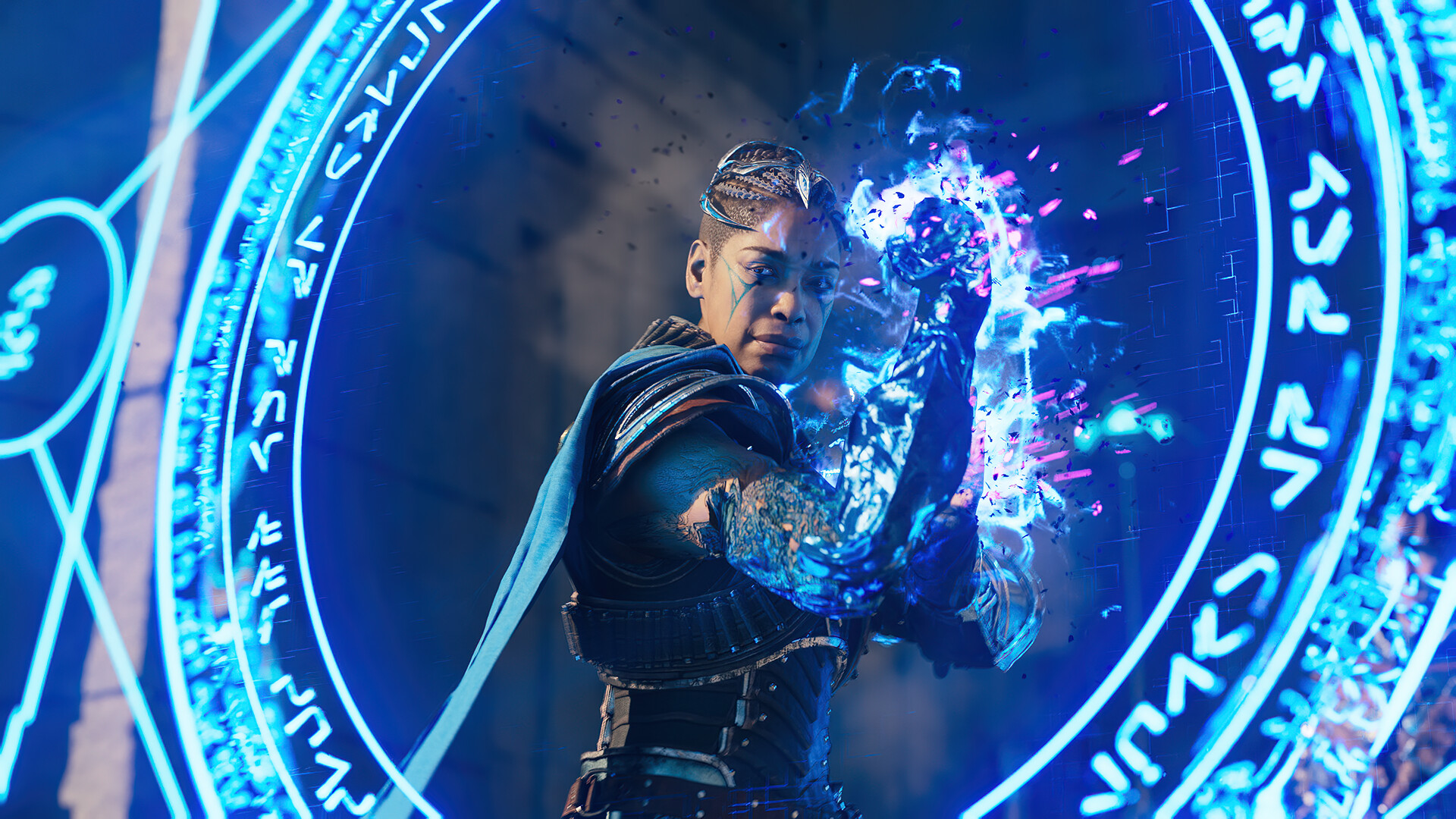Frame generation in games has been with us since the release of RTX 40 graphics cards in the fall of 2022. About a year later, AMD also came up with an answer, introducing its equivalent of the frame gene. He wrapped this in the form of FSR 3 technology, which also includes upscaling (formerly known as FSR 2). Until now, we could only test image generation on computers, but now the situation has changed.
Let me remind you that frame generation uses the GPU to generate an “artificial” frame between two classically rendered ones. So it can increase frame rates even if the processor can’t get more out of it. However, this is only an increase in fluency, since the latency is at best similar to latency without the frame gene, in worst cases it can even be significantly higher.
Here’s a technical overview, but which game will be the first to get FSR 3 on consoles? This is Immortals of Aveum, last year’s “magical shooter” that was one of the first games to be built on Unreal Engine 5. It was also one of two games to debut with FSR 3 on PC, so the game also reached the PlayStation 5 and Xbox consoles. Series X|S.
I tried it out in practice for at least some time in the introductory part on the PlayStation 5. And I must say that the technology pleasantly surprised me. I noticed a performance increase of over 50% with no noticeable increase in latency when switching between modes. The base one kept about 60 FPS, with the help of Frame Gen the game reached about 90. The frame rate is of course unstable, so VRR will be needed to make the image look smooth.
However, it should be noted that this was really just an introductory passage, and in later, more complex stages the result may be worse. In fact, this was confirmed for me at the end of the opening sequence, which has a lot of alpha and particle effects that tax the GPU. Even with frame generation and VRR enabled, I definitely felt the FPS drop. The lower the base frame rate, the worse the increase in latency (and, by the way, the quality of the generated images) will be. But it was still a very good result and certainly much better than we expected.
Below you can see a comparison of the quality of the generated and classically rendered image with fast movement, i.e. in the absolute worst case (in calmer passages the image is completely unproblematic). You will also notice them while working, but of course not as noticeable as in the images, thanks to the fact that the generated images alternate with classic ones that look normal.
By the way, it should be said that all this is relevant if you have a screen that supports 120 Hz. I also deliberately tried 60Hz frame generation and definitely don’t recommend it. The game was simply unplayable with V-Sync enabled, but it was also very bad without it. In short, the base frame rate was too low and therefore input lag was very high.
In the latest podcast, Digital Foundry also addressed the game and praised the implementation: the result was better than they expected.
Let’s see when another frame generation game appears on consoles. Perhaps this technology will find interesting applications on the future PlayStation 5 Pro console?
The new DF Direct Weekly is now available in Early Access on our supporter program, featuring Hellblade 2 reacting, Paper Mario modded at 60fps, IGN buying Gamer Network, and we tested FSR3 frame generation on console in Immortals of Aveum ! https://t.co/p0OZ6F5wrI pic.twitter.com/pgealldRr3
— Digital Foundry (@digitalfoundry) May 25, 2024
Source :Indian TV

